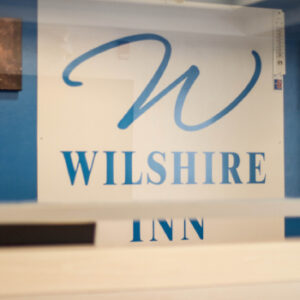Gypsum Wall Partition: The Future of Modern Construction
In the contemporary construction landscape, wall partitions are pivotal in defining spaces and providing privacy, flexibility, and style. Among the different materials used, gypsum stands out for its versatility, affordability, and functional benefits. Gypsum wall partitions have gained significant traction, being highly sought after in both residential and commercial construction. This rise in popularity is driven by several factors: ease of installation, fire resistance, sound insulation, and the lightweight nature of gypsum boards.
In this article, we will dive deep into the concept of gypsum wall partitions, explaining their properties, installation methods, advantages, and applications in different settings. Additionally, we will explore how gypsum is transforming construction and interior design by offering a seamless blend of aesthetics and practicality.
1. What is Gypsum?
Gypsum is a naturally occurring mineral, chemically known as calcium sulfate dihydrate (CaSO₄·2H₂O). It is one of the most abundant minerals on Earth and has been used for various construction purposes since ancient times. Modern-day gypsum is primarily used in the form of drywall or plasterboard, where it serves as a core material due to its fire-resistant properties and ease of shaping.
Gypsum boards are commonly referred to as drywall, plasterboard, or gypsum panel. These boards are made by sandwiching a gypsum plaster core between two sheets of heavy paper, resulting in a durable yet flexible material. Gypsum has unique qualities that make it ideal for partitioning spaces—its non-combustibility, acoustic insulation properties, and flexibility.
2. Gypsum Wall Partitions: An Overview
Gypsum wall partitions, also known as drywall partitions, are interior walls made from gypsum boards. These partitions are widely used in residential, commercial, and industrial spaces to divide rooms, create cubicles, and even for aesthetic purposes. They offer significant advantages over traditional brick and mortar walls, especially in terms of installation speed, cost, and flexibility.
Types of Gypsum Partitions:
- Single-layer Gypsum Partition: This type uses a single layer of gypsum board and is mainly suited for residential spaces or areas that don’t require heavy-duty sound insulation or fire protection.
- Double-layer Gypsum Partition: In this setup, two layers of gypsum boards are used, offering enhanced soundproofing and fire resistance. This makes it ideal for commercial buildings, hospitals, and high-traffic areas.
- Acoustic Gypsum Partition: These partitions are designed to provide maximum sound insulation, often incorporating materials like mineral wool or fiberglass between the gypsum boards.
- Fire-rated Gypsum Partition: Some gypsum boards are specially manufactured with additives to improve their fire resistance, making them suitable for use in areas where fire protection is critical, such as data centers or storage rooms.
3. Properties and Advantages of Gypsum Wall Partitions
a. Fire Resistance
One of the most significant advantages of gypsum partitions is their fire resistance. Gypsum contains water molecules in its crystalline structure, and when exposed to heat, the water is released as steam. This process, known as calcination, slows down the spread of fire, making gypsum an excellent choice for fire-rated walls.
b. Sound Insulation
Acoustic insulation is a key benefit of gypsum partitions. The soft core of gypsum helps absorb sound, reducing noise transmission between rooms or workspaces. When combined with additional insulation materials, gypsum partitions can significantly improve acoustic performance.
c. Ease of Installation
Gypsum wall partitions are much faster and easier to install compared to traditional brick walls. This is primarily because gypsum boards are lightweight and can be easily cut to fit different room sizes. The installation involves fixing the boards onto a metal or wooden frame, which is a quicker and less labor-intensive process.
d. Aesthetic Flexibility
Gypsum boards can be finished in a variety of ways, allowing for creative design possibilities. They can be painted, textured, wallpapered, or even veneered, offering a wide range of aesthetic options. In modern interiors, gypsum partitions are frequently used to create sleek, minimalist designs.
e. Environmentally Friendly
Gypsum is a sustainable material. It can be recycled, and the energy required to produce gypsum boards is relatively low compared to other construction materials. Many gypsum products also incorporate recycled content, further enhancing their environmental benefits.
f. Lightweight
Gypsum wall partitions are significantly lighter than brick or concrete walls, which reduces the load on a building’s structure. This makes them ideal for high-rise buildings or retrofitting projects where weight is a consideration.
g. Thermal Insulation
Gypsum naturally provides thermal insulation, contributing to a more energy-efficient building. When paired with insulation materials like fiberglass, gypsum partitions help maintain stable indoor temperatures, reducing the need for heating and cooling.
4. Installation Process of Gypsum Wall Partitions
The installation of gypsum partitions involves several steps:
a. Framework Construction
The first step is creating the framework that will support the gypsum boards. This framework can be made of steel, aluminum, or wood, depending on the project’s specific needs. Metal frames are typically preferred in commercial and large-scale projects due to their durability and fire resistance.
b. Fixing the Gypsum Boards
Once the frame is in place, the gypsum boards are fixed onto it using screws or nails. Care is taken to align the boards properly to create a smooth surface. Boards are usually available in standard sizes (like 4 feet by 8 feet), which can be easily cut to fit the desired space.
c. Sealing the Joints
After the boards are fixed to the framework, the joints between them are sealed using joint compound or plaster. This helps create a seamless surface that can later be finished with paint or wallpaper.
d. Finishing
Finally, the surface is finished as per the design requirements. This can involve priming, painting, texturing, or applying other finishes.
Tools and Equipment:
- Utility knife or saw for cutting the boards
- Screws or nails
- Drywall screws
- Joint compound or plaster for sealing joints
- Sandpaper for smoothing surfaces
- Painting or wallpapering tools for final finishes
5. Applications of Gypsum Wall Partitions
a. Residential Use
In homes, gypsum partitions are used to create interior walls, room divisions, and even for ceilings. They are particularly popular for modern apartment designs where flexibility and quick installation are essential. Gypsum boards are also frequently used in the construction of false ceilings to conceal wiring and HVAC ducts.
b. Commercial Spaces
Offices and commercial buildings benefit greatly from gypsum partitions due to their soundproofing and fire-resistant qualities. In open-plan offices, gypsum partitions are used to create cubicles and private meeting spaces without the permanence of solid walls.
c. Industrial Use
Industries often need to modify spaces quickly and cost-effectively. Gypsum partitions allow for the rapid creation of offices, storage rooms, or assembly lines within larger industrial units.
d. Hospitals and Healthcare Facilities
The clean, sterile environment required in healthcare facilities makes gypsum partitions a good choice. Their ease of cleaning, smooth surfaces, and ability to resist mold growth make them ideal for such sensitive areas. Additionally, acoustic and fire-rated gypsum partitions are often used in hospitals to meet specific building codes.
e. Educational Institutions
In schools, colleges, and universities, gypsum partitions are used to create classrooms, lecture halls, and laboratories. The acoustic properties of gypsum make it suitable for soundproofing educational environments, while the flexibility of the material allows for the adaptation of spaces as the institution’s needs change.
6. Challenges and Considerations in Using Gypsum Partitions
Despite its many advantages, there are a few challenges that come with the use of gypsum wall partitions.
a. Moisture Sensitivity
Gypsum boards can be vulnerable to moisture and may deteriorate when exposed to excessive humidity. However, moisture-resistant gypsum boards are available for areas such as bathrooms or kitchens, though they may come at a higher cost.
b. Limited Durability Against Impact
While gypsum partitions are durable, they are not as robust as brick or concrete walls. They can be damaged by impact, making them less suitable for areas prone to heavy wear and tear. However, impact-resistant gypsum boards are available for high-traffic areas.
c. Cost of Installation
Although gypsum partitions are relatively affordable, the overall cost can increase when specialized boards, such as fire-rated or acoustic panels, are used. Additionally, the cost of labor and finishing can contribute to the total expense.
7. Future Trends in Gypsum Wall Partitions
The construction industry is constantly evolving, and gypsum partitions are no exception. Innovations such as prefabricated gypsum panels and 3D printing technology are already beginning to influence the market. These advancements are expected to make installation even faster and more cost-effective in the future.
Furthermore, the increasing focus on sustainability and green building practices is likely to drive the development of more eco-friendly gypsum products. This may include the use of recycled materials, improved energy efficiency, and biodegradable components.
Conclusion: The Growing Importance of Gypsum Partitions in Modern Construction
Gypsum wall partitions represent a smart, efficient, and versatile solution for creating interior spaces. Their wide range of applications, coupled with their numerous advantages such as fire resistance, sound insulation, and aesthetic flexibility, have made them an indispensable part of modern construction. As technology advances, the gypsum industry is poised to continue growing, offering even more innovative solutions for residential, commercial, and industrial projects.














Post Comment